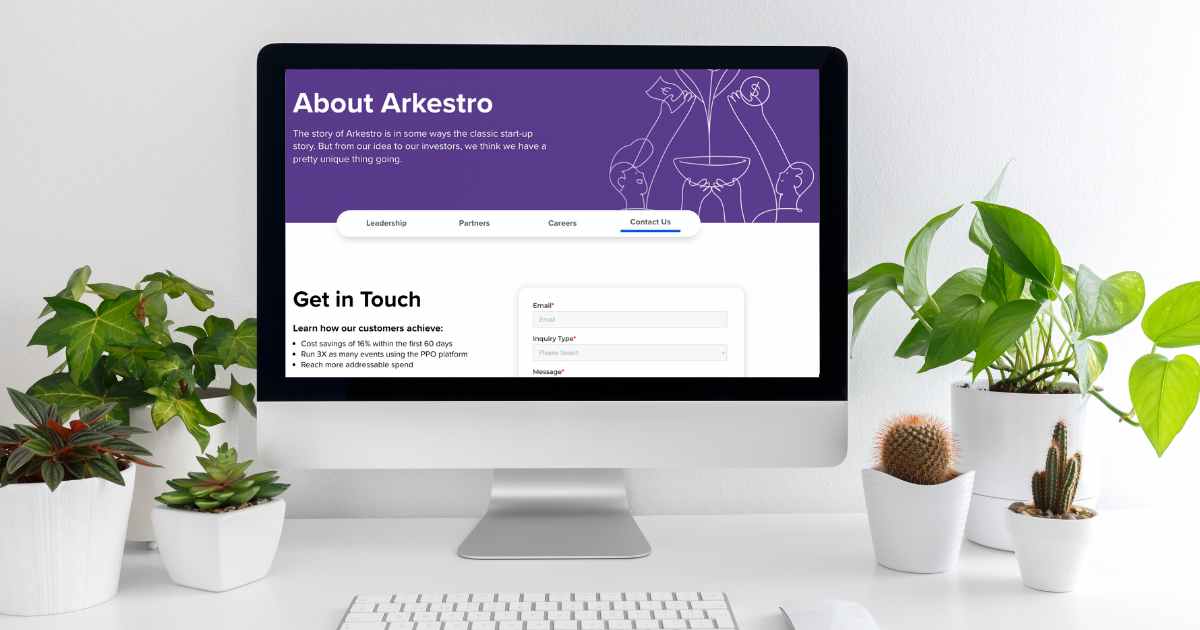4 Key Trends Reshaping Manufacturing Procurement in 2024
The dust is settling after the upheaval of the pandemic, yet the manufacturing industry remains forever changed. According to Deloitte, the manufacturing industry was in contraction throughout most of 2023 due to challenges like increased lead times, tight labor markets, and rising costs.
As we move into 2024, procurement teams continue to face hurdles like supply chain volatility, geopolitical tensions, budget restrictions, talent shortages, and more. Fortunately, tools like Arkestro’s Predictive Procurement Orchestration can help the industry overcome these challenges by helping executives achieve their overall business goals and priorities.
In fact, manufacturing procurement has never been more important, holding the power to influence IT, finance, and C-suite decision-making. Advances in AI, automation, and other emerging technologies are helping manufacturing procurement teams further increase their sphere of influence, allowing them to do more with less.
So what’s in store for 2024? Let’s take a look at some of the key trends driving manufacturing procurement in the upcoming year.
1. Policy-Driven Sustainability
Sustainable, environmentally friendly procurement practices are no longer nice to have — they’re a business necessity. According to a recent study, 65% of procurement professionals say that meeting Environmental, Social, and Governance (ESG) goals is at least a moderate priority, and 56% say they are likely to increase investments in ESG over the next six months.
Federal and global regulations are forcing manufacturers to make fundamental changes in the way they source materials, use energy, and more. For example, the European Union recently approved a “common charger” policy, which aims to reduce waste by requiring that all electronics be made with USB-C ports. Likewise, the Paris Agreement requires all nations to reduce emissions by 45% by 2030, and manufacturers in China, India, and the United States are scrambling to comply.

Consumers are also pressuring manufacturers to increase sustainability practices, and procurement teams worldwide are heeding the call.
Take a look at how procurement teams will meet ESG goals in 2024:
- Technology and supplier intelligence. Improved reporting, analytics, and data will help inform decisions and enforce ESG policies with suppliers.
- Sustainable bidding. Procurement can integrate eco-friendly practices into bidding strategies by setting clear sustainability criteria, prioritizing suppliers with established sustainability practices, and requesting detailed sustainability plans from suppliers.
- Competitor analysis. Manufacturers will use emerging technologies to compare their ESG performance in key areas against their biggest competitors.
- Sustainable packaging. Manufacturers can meet ESG goals by optimizing package design, implementing circular economy practices with packaging, and by using recyclable, biodegradable, or compostable packaging materials.
2. Generative AI & Automation
Experts have predicted that AI will transform nearly every industry over the next decade, and procurement is no exception. According to Amazon Business, 98% of procurement teams plan to invest in automation and AI over the next three years.
Survey respondents say the trend is driven by a desire to increase efficiency, improve productivity, reduce errors, and improve cost savings. Another report found that 50% of respondents are investing in AI to improve employees’ use of time and allow for more high-value work.
Here are just a few ways manufacturing procurement teams can leverage AI and automation tools this year:
- Minimize supply chain disruptions. Pattern recognition tools can be used to identify emerging supply shortages and then recommend alternatives to prevent disruptions.
- Reduce complexity. Large language models power chatbots that can give quick answers to complex questions, freeing time for more value-adding tasks.
- Get customized recommendations. Procurement teams can get personalized recommendations based on the analysis of vast amounts of data.
- Improve cost savings. When combined with analytics, AI offers insights for better budgeting and cost-cutting opportunities.
- Increase productivity. Automate spend analysis, product selection, and other tedious tasks so procurement teams can focus on strategic goals.

3. Value-Driven Data Analytics
The majority of today’s procurement teams use less than 20% of their company’s procurement data. But the tides are shifting in 2024. The global procurement analytics market is slated to reach $32.3 billion by 2031, and more than 70% of surveyed manufacturers say they’re now using data analytics and cloud computing to streamline processes and increase efficiency.
Manufacturing procurement leaders can further amplify the value of data analytics by weaving in the power of AI, which helps to enhance reports for both internal and external data. Procurement professionals can use these analytics to increase visibility, drive better decision-making, and optimize procurement strategies.
Let’s review strategies for leverage data analytics in the new year:
- Predictive analytics for demand forecasting. Analyzing historical data, market trends, and external factors can improve accuracy.
- Supplier performance analysis. By using data to monitor and evaluate supplier performance, teams can improve KPIs like delivery times, quality metrics, and more over time.
- Cost analysis. Procurement teams can analyze cost data to discover cost drivers, compare supplier pricing, and reveal opportunities for cost reduction.
- Contract management. Analytics tools can track compliance and performance against contractual obligations, helping to identify deviations and optimize processes.
4. Supply Chain Resilience
The pandemic highlighted the importance of supply chain resilience. As procurement teams strive to meet ESG initiatives and navigate continued economic and geopolitical uncertainties, supply chain resilience continues to be a top priority.
One study found that three out of four supply chain professionals engaged in supply chain management in 2022 — a noticeable increase from 2018. Another study found that 80% of businesses believe they’re reducing risk by treating suppliers as part of their own business.
Manufacturing procurement professionals can improve supply chain resilience with the following strategies:
- Diversify the supplier base. By expanding the supplier base and identifying alternative suppliers for critical components, procurement teams can reduce dependency on a single source.
- Conduct risk assessments. Thorough, ongoing risk assessments help identify potential vulnerabilities and mitigate the impact of geopolitical events, natural disasters, supply shortages, and more.
- Foster strong relationships with key suppliers. Procurement professionals should practice open communication and establish contingency plans to facilitate quicker responses to challenges.
- Increase real-time visibility. A platform backed by data science can help procurement teams improve visibility and detect potential issues early on.
- Adopt agile procurement practices. Flexible contracts and agreements allow for quick adjustments to changing market conditions.
Optimize Manufacturing Procurement in 2024 with Arkestro

Manufacturing procurement stands at a crossroads in 2024. Although the challenges are vast, procurement leaders who leverage AI, automation, and other emerging technologies are sure to reduce spend, make better buying decisions, and increase their competitive edge.
Arkestro’s Predictive Procurement Orchestration platform allows manufacturing procurement professionals to capitalize on all the latest 2024 trends, helping to meet sustainability goals, shorten cycle times, and scale your influence — even when short on budget, talent, and time.
Contact Arkestro today to see how you can use machine learning and data science to optimize manufacturing procurement cycles and get better outcomes, faster, at scale.
